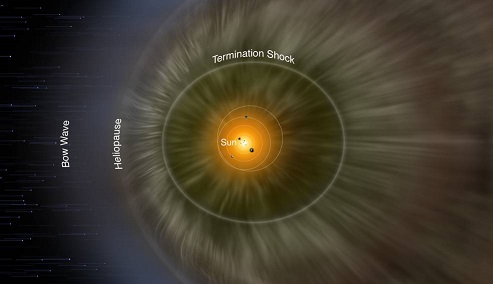

| Online: | |
| Visits: | |
| Stories: |

| Story Views | |
| Now: | |
| Last Hour: | |
| Last 24 Hours: | |
| Total: | |
Deep-Space Radiation Alert: Sunspots Vanish / Galactic Cosmic Rays Penetrate the Inner Solar System (+Video)
As 2017 begins, one thing is clear. Sunspots are vanishing.
So far, the sunspot number has been zero almost every day: Jan. 1st, 2nd, 4th, 5th, 6th, 7th and 8th. A close look at today’s sun reveals no dark cores at all.
The increasingly-blank face of the sun is a herald of Solar Minimum. Sunspot numbers rise and fall with an ~11-year period, slowly oscillating between Solar Max and Solar Min. In 2017, the pendulum is swinging toward minimum.
Contrary to popular belief, space weather does not stop when sunspots vanish. The last few nights are proof: Auroras have been raging around the Arctic Circle. The cause of the display is a solar wind stream flowing from a large hole in the sun’s atmosphere. Such “coronal holes” are common during solar minimum. No sunspots? No problem.
In fact, a lot of interesting things happen during solar minimum. For instance, as sunspots vanish, the extreme ultraviolet output of the sun decreases. This causes the upper atmosphere of Earth to cool and collapse. With less air “up there” to cause orbital decay, space junk accumulates around our planet.
Also during solar minimum, the heliosphere shrinks, bringing interstellar space closer to Earth. Galactic cosmic rays penetrate the inner solar system with relative ease. Indeed, a cosmic ray surge is already underway. Goodbye sunspots, hello deep-space radiation.
http://www.spaceweather.com/
http://www.solarham.net/
Clips, images credit: ESA/NASA, ESO & SDO





Oh my!!! You are profoundly ignorant.
Only on BIN could somebody take the everyday normal and make it into an OMG Fe@r Porn entry.
Do yourself a favor and check the sunspot records for all of 2009. 260 out of 365 days were spotless!!! And yet, we pushed on, in the face of your killer deep space radiation. And guess what, we will see a long stretch of no spot again, and again, and again (on an 11 year oscillation – That means it comes and goes on an 11 year timing – Maroon)